Photos by Scott Buschman
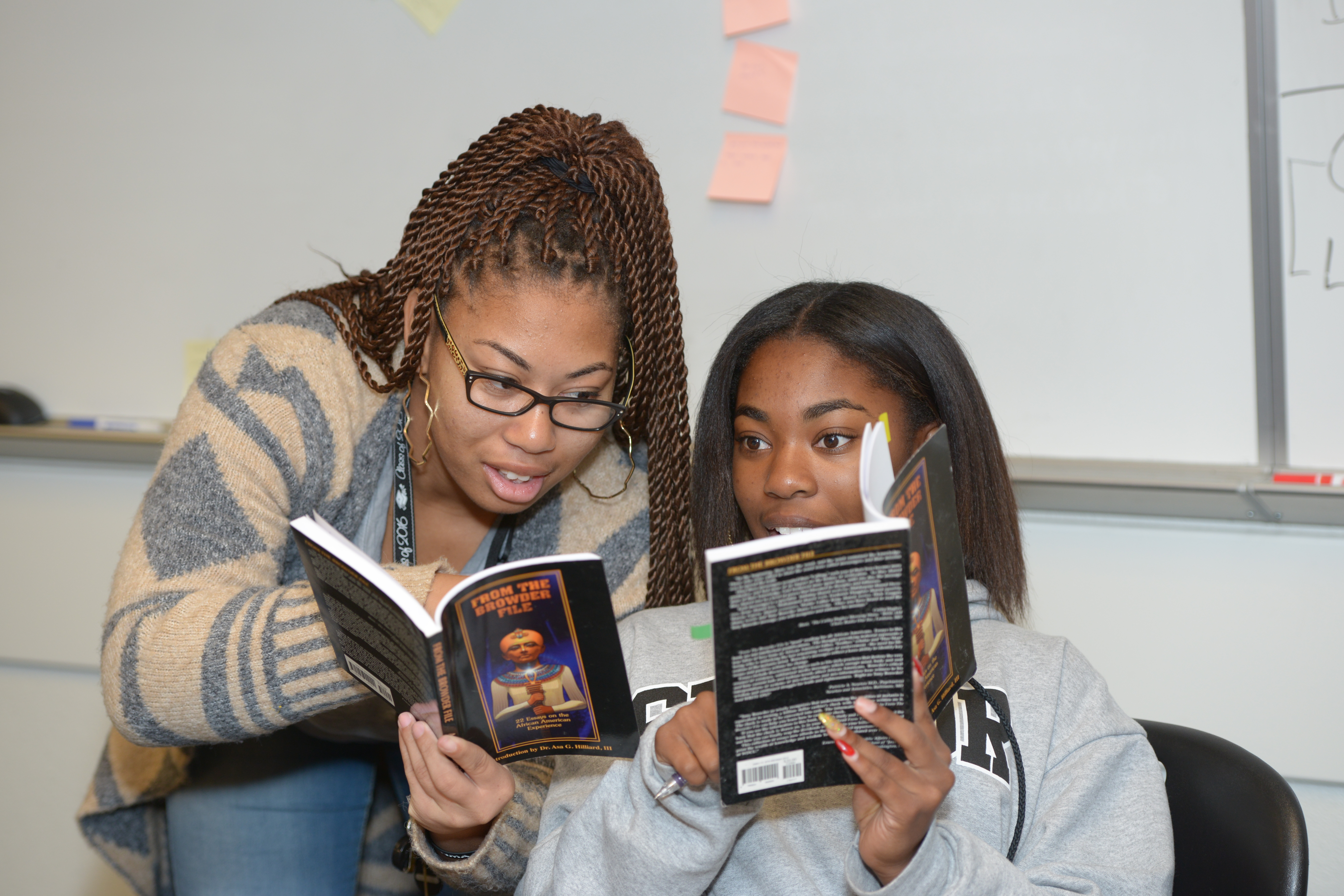
Ashlea Laury, left, and Rozalina Ingram search for answers in Debra Robinson’s class.
When Ashlea Laury was growing up, Black History Month in February meant studying about slavery, Martin Luther King Jr. and Rosa Parks. But now, in a unique class called Project WORD, the senior at Mt. Pleasant High School in San Jose is learning more about her African American roots.
“We were royalty in Africa before we were slaves,” she says proudly. “There is much more to our history than what the history books tell us.”
Debra Robinson is among the many educators to change the tradition of teaching black history just one month per year. Her class instills African American students with a sense of pride that comes from understanding their comprehensive history, including ancient Egyptian civilization, where major advancements in mathematics, astronomy, science and architecture took place. Students look forward to the monthly visits from Egyptologist Anthony T. Browder, an author and cultural historian who has lectured worldwide on issues related to African and African American History.
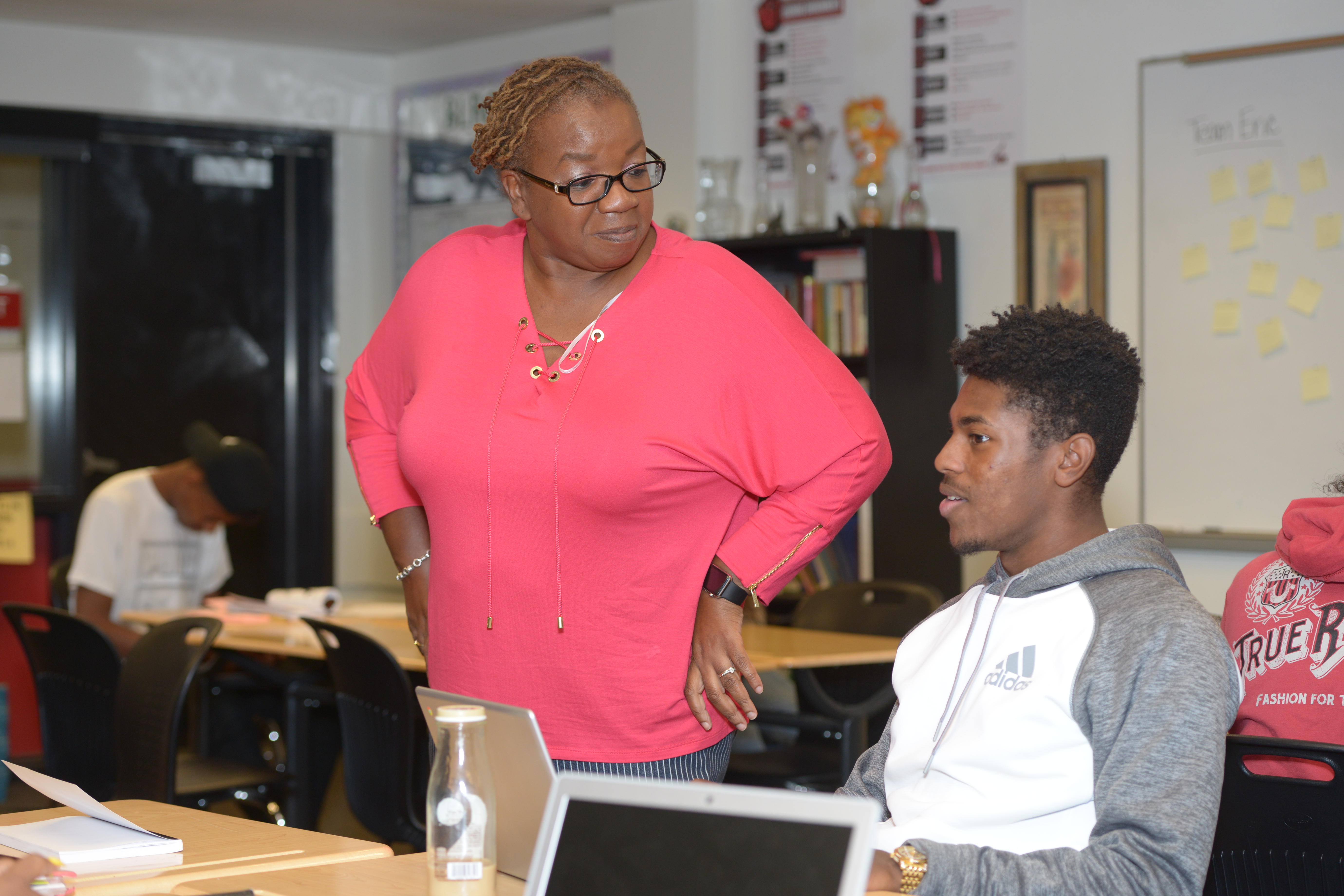
Debra Robinson with Christian Drake.
Project WORD (which stands for Working on Redefining Our Destiny) is a cultural enrichment class for African American students created by Debra Watkins, a longtime San Jose educator and current executive director of A Black Education Network, formerly called the California Alliance of African American Educators.
“Black history should not be just a one-month event,” says Robinson, a member of the East Side Teachers Association. “It’s part of American history. You can’t separate these things. In most schools, our history begins in America with slavery. But we were people before we were slaves.”
While Martin Luther King and Rosa Parks are the most recognized leaders in the struggle for civil rights, Robinson makes a point to teach students about lesser known leaders and events in black history, including Huey Newton and the Black Panther Movement, human rights activist Malcolm X, the Harlem Renaissance of art and music that led to the Roaring ’20s, historian and civil rights activist W.E.B. Du Bois, botanist and scientist George Washington Carver, and renowned mathematician and astronomer Benjamin Banneker, whose mathematical genius was key in the design and development of the nation’s capital. History, she explains, is broader than a few individuals.
Students also discuss what Robinson describes as “black history in the making,” such as the Black Lives Matter movement and athletes taking a knee during the national anthem, both forms of protest to raise awareness of African Americans who have been gunned down in the streets of America in record numbers.
“We discuss the need to remain conscious and vigilant of who we are and what we are doing, as events continue to evolve.”
— Debra Robinson, East Side Teachers Association
“We discuss our responsibility as African Americans in terms of patriotism, when in many ways we are being dishonored as citizens,” says Robinson. “We discuss the need to remain conscious and vigilant of who we are and what we are doing as events continue to evolve, so we understand what is going on in our world. The theme for this year is ‘Stay Woke.’ ”
Best of all, the class communicates to black students that they are valued yearlong, and Project WORD builds a strong sense of community that has contributed to students’ academic success.
“This class helps me to better understand what it means to be black,” explains senior Melissa Perry. “I’m black and Mexican, and I had no black friends. But through this class I’ve learned more about my other half, and I’m proud of who I am.”
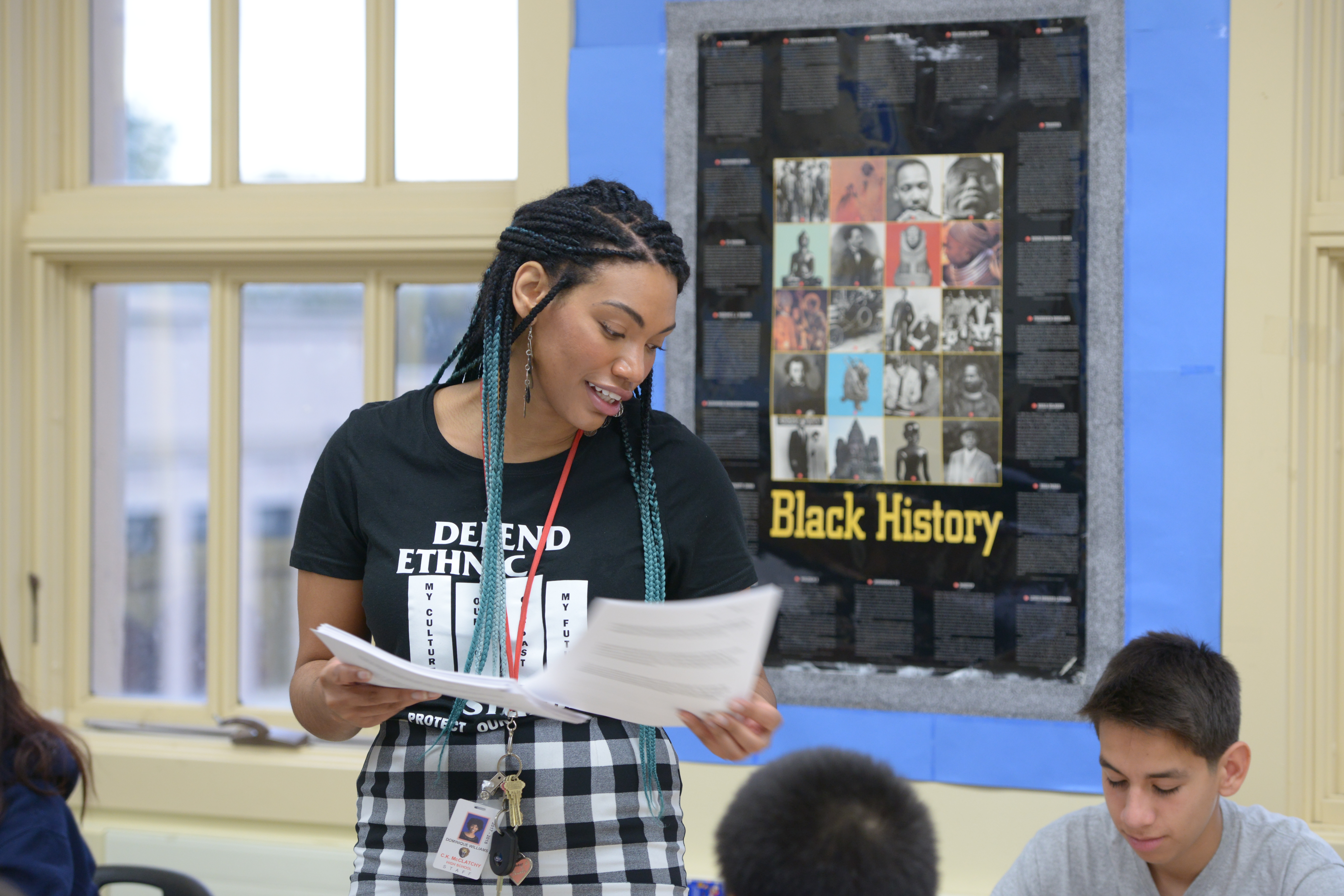
Dominique Williams, who teaches high school ethnic studies, says making history inclusive benefits everyone.
Ethnic studies classes offer depth and perspective
Dominique Williams asks her students if they can name the “4 I’s” of oppression. Hands rise, and students list them: ideological, institutional, interpersonal and internalized.
Institutional racism — the idea that one group is better than another and has the right to control the other group — has been embedded in society throughout history, says Williams, who teaches ethnic studies at McClatchy High School in Sacramento. She believes it is time for that to change, and the first step is making history inclusive, so that students see themselves as part of the past and the present.
“Ethnic studies allows schools to teach U.S. history the way it should be taught, by including all groups and highlighting their contributions to our country,” says Williams. “U.S. history is very white centric, and ethnic studies essentially decentralizes the narrative of white Americans and is inclusive of everyone. It’s a way to go beyond Black History Month, Latino History Month, Asian History Month and Women’s History Month. In ethnic studies, we do it all year round.”
Making history more inclusive doesn’t just benefit students of color — it also benefits white students, says the Sacramento City Teachers Association member.
“It helps to raise awareness and empathy, so they know other peoples’ stories. Whether students are from different cultures, countries, income levels, or are LGBT, they deserve to be validated and feel they belong in the learning environment.”
She encourages her students to make a map of their lives and highlight major moments, which often have to do with race, culture and trauma.
“I want my students to see they have agency and they are a part of history. History is still happening, and they belong in it.”
Seeing black history firsthand
Students at Carlmont High School in Belmont will travel this spring with ethnic studies teacher Karen Ramroth, during a weeklong journey along the path of the civil rights movement through the American South for a program called Sojourn to the Past .
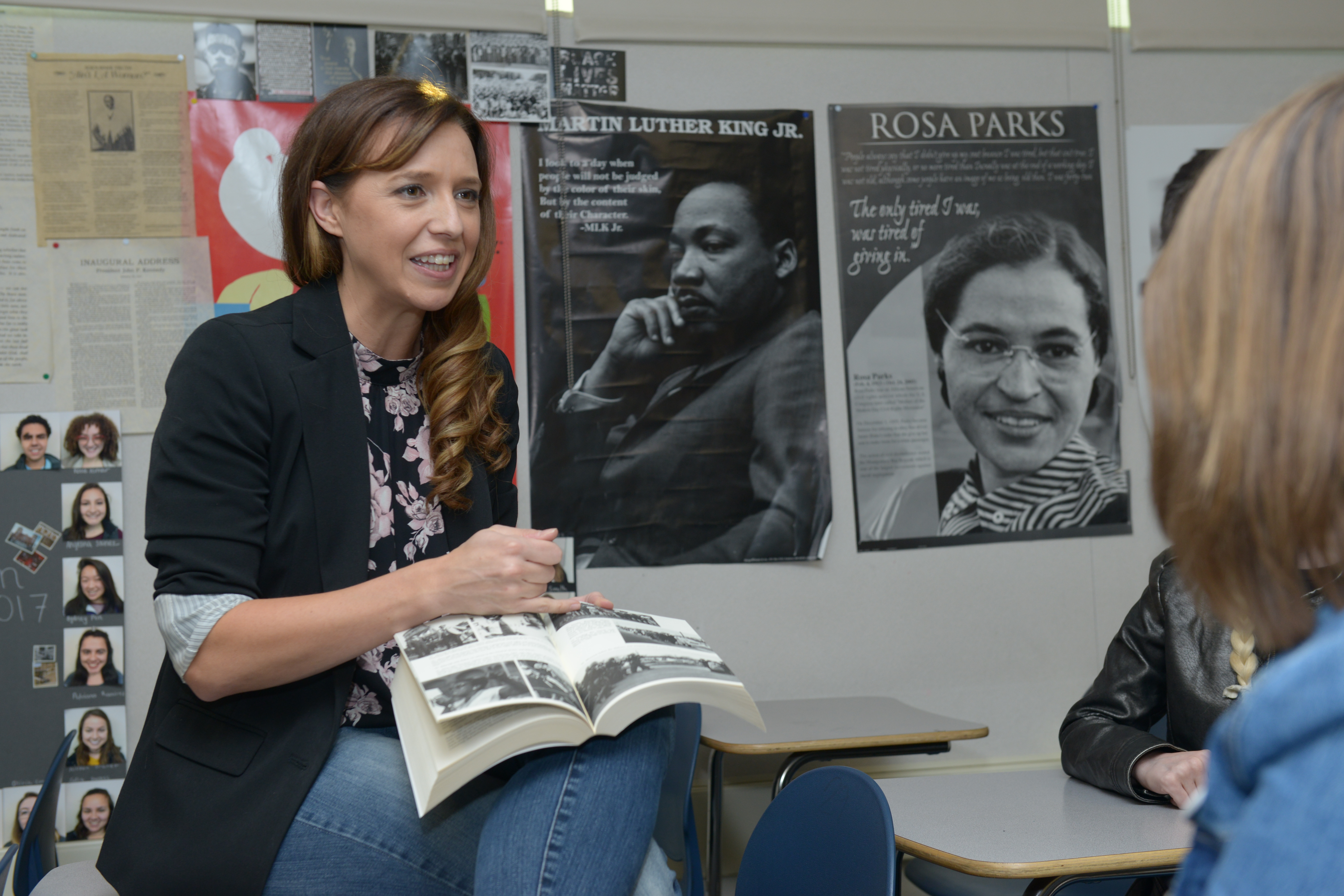
This spring, Karen Ramroth will travel with students to Sojourn to the Past, a weeklong journey along the path of the civil rights movement in the American South.
Founded by Jeff Steinberg, a San Bruno teacher (now retired), the program is aligned with state and national curriculum standards, provides participants with an opportunity to earn college credit, and is made available to underserved students. It has been honored by the President’s Committee on the Arts and Humanities, the National Education Association, and the U.S. Congress as a social justice education outreach program for youth.
“Students learn about the work and sacrifices of the past to empower them to address issues in the present.”
— Karen Ramroth, Sequoia District Teachers Association
“The connection between Sojourn and ethnic studies means learning about history and turning it into some sort of action,” says Ramroth, a member of the Sequoia District Teachers Association who went on the Sojourn in high school. “We ask students in both programs to learn about the work and sacrifices of the past to motivate, encourage and empower them to address issues in the present and future. I know Sojourn had that impact on me, and I have seen the same impact on my students.”
This year, students will go to Jackson, Mississippi, to learn the story of Medgar Evers, who worked to overturn segregation and voting rights before being murdered by a white supremacist; Birmingham, Alabama, to learn the story of the Children’s Campaign and the bombing of the 16th Street Baptist Church; Little Rock, Arkansas, to learn about the Little Rock Nine; and Memphis, Tennessee, to learn about the last days of King and the Poor People’s Campaign.
Elysia Wright, a senior going on the trip, isn’t sure what to expect.
“I don’t know a lot about civil rights, but I want to become involved. I’m an introvert, and I’m hoping that seeing these things will give me courage to participate more in the movement.”
Learning at a young age
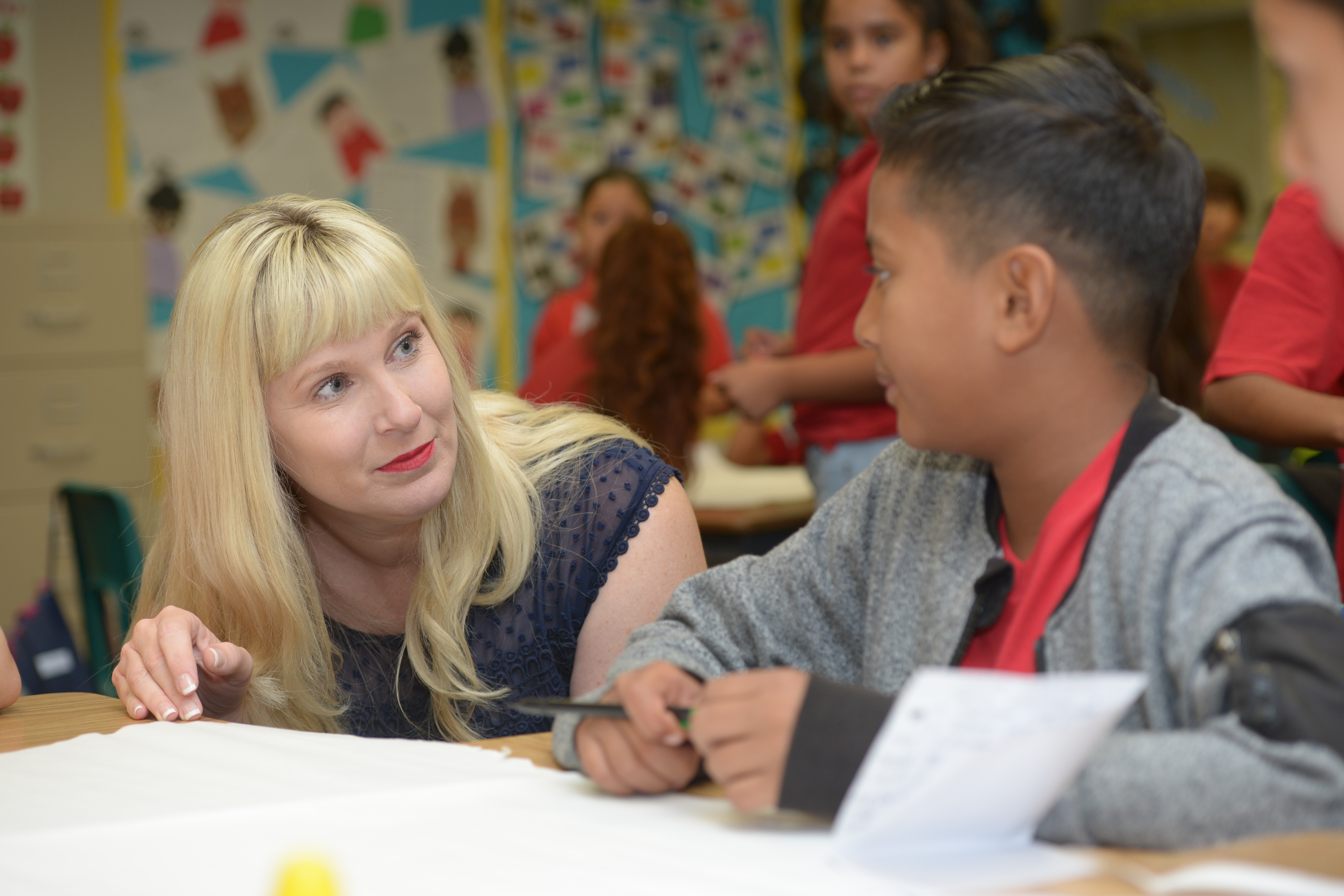
“Let’s talk about Sylvia Mendez. She moved to Westminster and wanted to go to the white school, but she was told she had to go to a school for Mexican children. Her family fought back.”
It’s early October during Latino Heritage Month, and Kristie Puls explains to her fourth-grade GATE (Gifted and Talented Education) students at Westmont Elementary School in Anaheim about the court case that helped desegregate schools in California. She makes a point of teaching history about minorities all year long, so students feel included.
“The election scared a lot of kids. There has been some bullying. So it’s important to talk about how people are different and how boring it would be if we were all the same.”
Puls has been teaching her students about Martin Luther King Jr., Rosa Parks and Ruby Bridges, and how these heroes were a catalyst in the battle for equal fights.
“What you will do matters. Someday your actions may also become a part of history.”
— Kristie Puls, Anaheim Elementary Teachers Association
“We have written letters to Ruby Bridges asking about her experiences with racism as a young child and what advice she has for about overcoming bullying and differences. We talked about how difficult it can be to go to a new school, and how terrible it would be if people didn’t want you there.”
Talk returns to the Mendez decision in 1947, and the children are shocked to learn that it really happened not so long ago. Many of their grandparents were alive then.
“If this case never happened, we still might have segregation,” says Puls, a member of Anaheim Elementary Teachers Association. “That would be terrible.”
She asks students to come up with a noun to describe the Mendez family, who won the landmark Orange County case, Mendez v. Westminster School District, which laid the groundwork for school desegregation throughout California and eventually the nation decades before the civil rights movement captured the country’s attention. She explains that the family didn’t win at first, and had to appeal.
“She had perseverance,” says a student. “Her family never gave up.”
“It’s important to never give up,” replies Puls. “What the Mendez family did matters. What you will do also matters. Someday your actions may also become a part of history.”
Resources
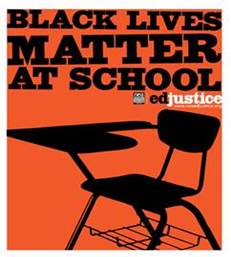
NEA’s Black Lives Matter at School poster.
Black Lives Matter at School
Check out NEA’s resource site centered on Black Lives Matter at School. You’ll find stories detailing how educators and students are organizing for racial justice; curated lesson plans by grade level; resources from locals, school districts and partners; and art and videos to use to educate, engage and take action for racial justice in education.
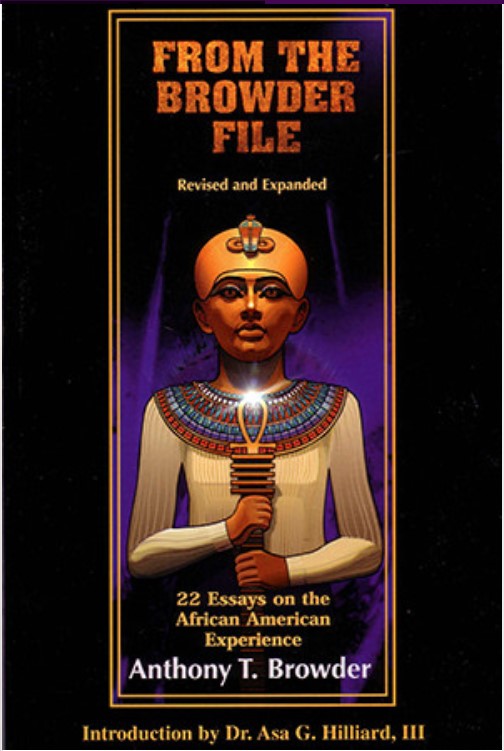 Free Your Mind
Free Your Mind
Project WORD curriculum used in Debra Robinson’s Mt. Pleasant High School class is drawn from From the Browder File by cultural historian Anthony T. Browder.
The Discussion 0 comments Post a Comment